1. Pop-Up Cultural Events
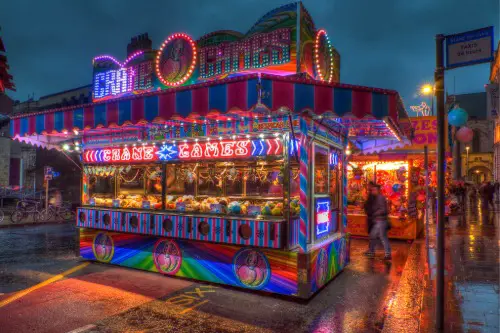
In an effort to make art and culture more accessible, many small towns are embracing pop-up cultural events, according to NPR. These temporary installations and performances transform everyday spaces like parks, vacant lots, and even barns into vibrant cultural hubs. For instance, a vacant downtown storefront might host a weekend art exhibit featuring local artists, drawing residents and visitors alike. This trend not only brings art closer to the community but also revitalizes underutilized spaces, fostering a sense of pride and engagement among locals. It’s a creative way to celebrate local talent and make culture an integral part of daily life.
The spontaneity of pop-up events adds an element of surprise and excitement, encouraging people to explore their towns in new ways. Imagine stumbling upon a live music performance in a community garden or a poetry reading in a converted grain silo. These experiences create lasting memories and strengthen community bonds. As more towns adopt this trend, they’re discovering that temporary events can have a lasting impact on local culture and tourism.
2. Indigenous-Led Tourism Initiatives
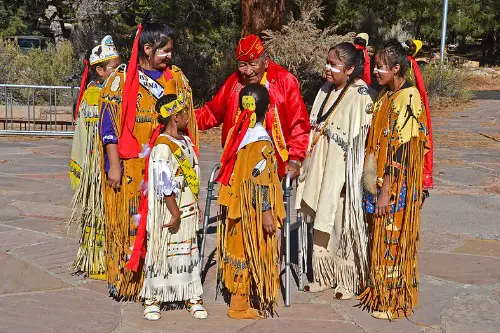
Across small-town America, there’s a growing recognition of the value of Indigenous cultures, according to The New York Times. Indigenous communities are leading tourism initiatives that showcase their heritage, crafts, and traditions. Visitors can participate in activities like traditional storytelling sessions, guided nature walks highlighting native plants and their uses, or workshops on Indigenous crafts such as beadwork or pottery. These experiences offer authentic insights into Indigenous ways of life and provide economic opportunities for these communities. It’s a meaningful way for visitors to connect with the original stewards of the land and for Indigenous peoples to share their rich cultural heritage.
These initiatives also promote cultural preservation and education. For example, a tribe might host an annual festival open to the public, featuring traditional dances, music, and foods. Such events foster understanding and respect between Indigenous and non-Indigenous communities. As these programs gain popularity, they’re helping to reshape the narrative around Indigenous cultures in America, highlighting their vibrancy and resilience.
3. Agritourism Experiences
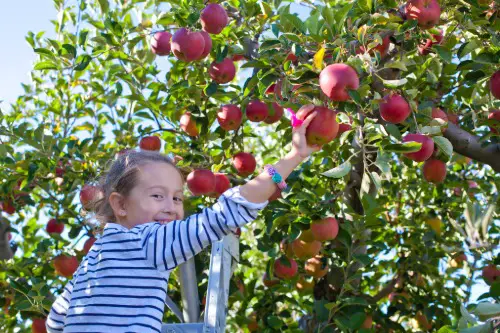
Agritourism is blossoming in small towns, offering city dwellers a taste of rural life according to the National Association of Counties. Farmers are opening their gates to visitors, providing experiences like fruit picking, farm-to-table dinners, and overnight stays in rustic settings. Imagine spending a day harvesting apples, learning how to make cider, and then enjoying a meal featuring produce straight from the fields. These activities not only generate additional income for farmers but also educate the public about agriculture and the origins of their food. It’s a hands-on way to reconnect with nature and support local farming communities.
Families, in particular, are drawn to these experiences as educational outings for children. Kids can learn about animal care, plant cultivation, and the importance of sustainable farming practices. Some farms offer workshops on cheese-making or beekeeping, providing unique opportunities to acquire new skills. As consumers become more interested in where their food comes from, agritourism serves as a bridge between urban and rural communities, fostering appreciation and support for local agriculture.
4. Wellness Retreats in Nature
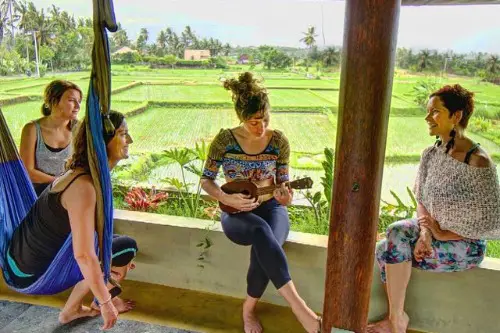
The quest for wellness has led to the rise of retreats in serene, rural settings, according to Time Out. Small towns with abundant natural beauty are capitalizing on this trend by offering programs that combine physical activity, relaxation, and holistic health practices. Participants might engage in yoga sessions overlooking a tranquil lake, guided meditation in lush forests, or workshops on mindfulness and stress reduction. These retreats provide a much-needed escape from the hustle and bustle of city life, allowing individuals to recharge and focus on their well-being.
Local businesses are partnering to create comprehensive wellness packages. A weekend retreat might include accommodations in a cozy bed-and-breakfast, organic meals sourced from nearby farms, and spa treatments using locally made products. Outdoor activities like hiking, kayaking, or horseback riding are often incorporated to promote physical health and appreciation of the natural surroundings. As people become more health-conscious, these rural wellness retreats offer a perfect blend of relaxation and rejuvenation.
5. Unique Accommodations
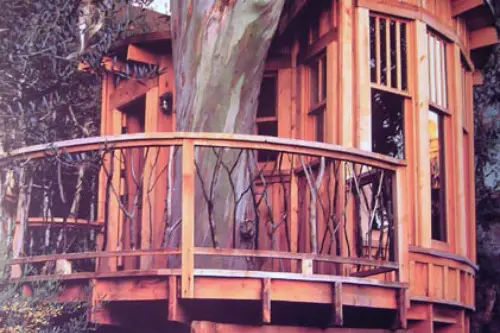
Travelers are increasingly seeking out unique lodging experiences that go beyond the typical hotel stay, Forbes reports. Small towns are responding by offering accommodations like treehouses, yurts, and tiny homes. Imagine waking up in a cozy treehouse nestled in the woods, with birdsong as your alarm clock, or staying in a yurt on a hillside with panoramic views of the countryside. These distinctive lodgings provide memorable experiences that attract tourists looking for something out of the ordinary. They also allow property owners to utilize their land creatively and sustainably.
In addition to being unique, many of these accommodations emphasize eco-friendly practices. Solar power, composting toilets, and rainwater collection systems are common features. Guests appreciate the opportunity to stay in places that minimize environmental impact while offering comfort and charm. This trend not only boosts local tourism but also promotes sustainable living practices. As more travelers seek authentic and environmentally conscious experiences, unique accommodations in small towns are becoming increasingly popular.
6. Digital Detox Vacations

The rise of digital detox vacations is taking small-town America by storm, as people seek a break from constant connectivity. Many rural inns, lodges, and bed-and-breakfasts are now advertising themselves as “Wi-Fi-free zones,” encouraging guests to power down their devices and embrace a slower pace of life. Some places even go as far as collecting phones at check-in, offering lockboxes where guests can store their electronics for the duration of their stay. Instead of scrolling through social media, visitors are encouraged to explore nature, engage in hands-on activities, and connect with the people around them. With stress and burnout at an all-time high, these unplugged getaways have become a form of self-care.
Small towns are uniquely positioned to cater to this trend, offering scenic landscapes, outdoor adventures, and cozy accommodations perfect for relaxation. Guests might spend their days hiking through national parks, fishing in quiet lakes, or participating in workshops on pottery, woodworking, or bread-making. Evenings are often filled with storytelling around a fire pit, board games, or simply watching the sunset without the distraction of notifications. Local businesses are also adapting, with cafés and restaurants encouraging conversation over screens and bookstores promoting paperbacks over e-books. As more people realize the benefits of stepping away from technology, digital detox vacations are proving that small-town charm and simplicity are exactly what the modern traveler craves.
7. Hyperlocal Food Movements
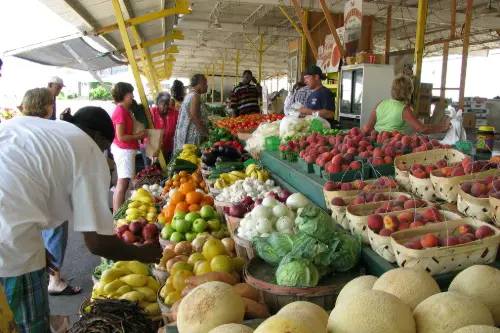
Small towns are redefining what it means to eat local, with hyperlocal food movements gaining traction across the country. Unlike the broader farm-to-table trend, hyperlocal eating focuses on sourcing food from an extremely close radius—sometimes just a few miles or even a single farm. Restaurants, cafés, and bakeries are crafting menus entirely based on what is available seasonally and grown nearby, meaning dishes change frequently and reflect the region’s true agricultural identity. Some towns have even launched community-supported agriculture (CSA) programs where residents subscribe to weekly boxes of fresh produce, dairy, and meats straight from local farms. This ensures that money stays within the community while also reducing food miles and promoting sustainability.
In addition to supporting farmers, hyperlocal movements are fostering deeper connections between food producers and consumers. More people are learning about regenerative agriculture, heritage crops, and traditional food preservation techniques like pickling and fermenting. Local chefs are experimenting with forgotten ingredients, reviving recipes that date back generations. Some towns have taken it a step further by organizing “100-mile dinners,” where every ingredient used—from flour to cheese to spices—comes from within a strictly defined area. The result is a dining experience that is not only delicious but also deeply rooted in place. In an age of mass production and global supply chains, small towns are proving that hyperlocal food isn’t just a trend—it’s a return to the way things were always meant to be.
8. Vanlife-Friendly Infrastructure
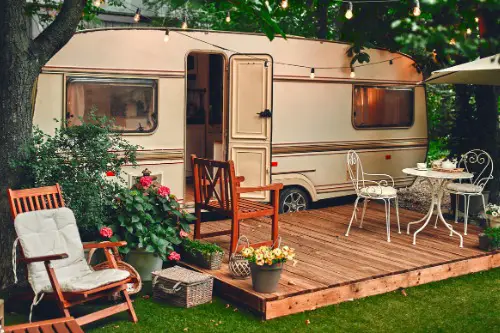
The vanlife movement, once associated with nomadic millennials seeking freedom on the open road, is now finding an unexpected home in small-town America. As more people convert vans, buses, and campers into full-time or seasonal homes, small towns are adapting to accommodate them. Forward-thinking communities are building dedicated van-friendly parking spots with electrical hookups, communal rest areas, and even overnight parking permits for those passing through. In towns where hotels are scarce or expensive, this infrastructure has made it easier for road travelers to stop, shop, and explore. Some businesses, like breweries, coffee shops, and bookstores, are also welcoming vanlifers by offering free Wi-Fi, charging stations, and discounts in exchange for social media promotion.
Unlike traditional RV parks, these vanlife-friendly spots are often integrated into town centers, allowing travelers to engage with the local community rather than just passing through. Farmers’ markets, outdoor concert series, and pop-up artisan fairs have also started catering to vanlifers, offering fresh produce and unique handmade goods. Some towns have even established “vanlife meetups,” where like-minded travelers can share stories, trade tips, and build a sense of community. The shift is mutually beneficial—small towns get an economic boost from visitors, while vanlifers find welcoming places to rest without the hassle of stealth camping. As remote work continues to rise, small-town vanlife infrastructure is proving that a digital nomad lifestyle doesn’t have to mean staying off the grid completely.
9. Paranormal Tourism
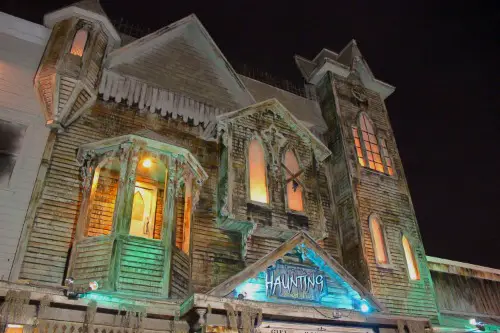
Small towns have long been home to ghost stories and folklore, but in recent years, paranormal tourism has become a booming industry. Towns with haunted histories are now fully embracing their eerie reputations, offering ghost tours, paranormal investigations, and even themed lodging experiences. Old mansions, abandoned hospitals, and historic inns are marketing themselves as haunted destinations, drawing in thrill-seekers eager to experience unexplained phenomena. Some towns have taken it even further by hosting annual paranormal festivals, where experts in ghost hunting, cryptozoology, and UFO sightings gather to discuss supernatural encounters. This niche form of tourism has proven to be a major economic driver, especially in places that might not otherwise attract large numbers of visitors.
Beyond ghost tours, paranormal tourism often intersects with local history, giving visitors a deeper appreciation for a town’s past. Some ghost walks incorporate historical reenactments, while others include stops at significant landmarks that played a role in old legends. Local businesses are cashing in on the trend, too—cafés serving “haunted hot chocolate,” bookshops stocking paranormal research guides, and even distilleries crafting “spirit-infused” cocktails. Even skeptics find themselves intrigued by the storytelling and mystery behind it all. With social media amplifying ghostly encounters, more small towns are realizing that their local legends might just be their biggest tourist attraction.
10. Microbrewery and Distillery Boom
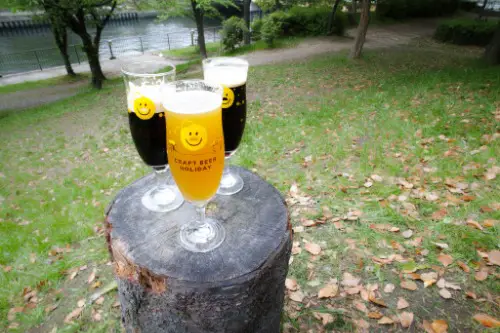
Craft beer and artisanal spirits are no longer just a big-city trend—small towns are experiencing a microbrewery and distillery boom. What was once an occasional roadside brewery is now a full-fledged movement, with small communities producing some of the country’s most unique and high-quality beverages. Local ingredients play a key role, with brewers using regionally sourced hops, wildflower honey, or even foraged berries to create distinctive flavors. Some towns have developed entire brewery districts, turning old warehouses and barns into bustling taprooms and speakeasy-style distilleries. For towns that have historically struggled with economic downturns, these businesses are proving to be a much-needed source of revenue and job creation.
The boom isn’t just about alcohol—it’s about culture and community. Many of these small-town breweries host live music, trivia nights, and community fundraisers, turning them into local gathering spots rather than just places to grab a drink. Distilleries are also getting creative, offering whiskey-aging workshops or gin-blending experiences where visitors can craft their own personalized bottles. The rise of craft tourism means beer and spirits enthusiasts are traveling specifically to visit these small-town establishments, injecting new life into local economies. As more people seek out handcrafted, locally made products, small-town breweries and distilleries are proving that you don’t need a big city to make a big impact in the craft beverage scene.
11. Tiny Home Villages
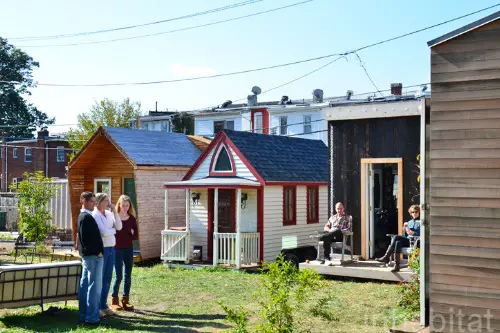
The tiny home movement has officially arrived in small-town America, but it’s not just about downsizing for individuals—it’s about community. Across the country, entire villages of tiny homes are popping up, offering affordable housing solutions, eco-friendly living spaces, and even short-term vacation rentals. Some towns are using tiny homes to address housing shortages, providing lower-cost options for seniors, veterans, and people transitioning out of homelessness. Others are marketing them as a tourist attraction, creating cozy, Instagram-worthy stays that appeal to travelers looking for unique accommodations. The appeal is clear: tiny homes use fewer resources, require less maintenance, and encourage a minimalist lifestyle that resonates with people looking to simplify their lives.
These villages often come with shared amenities like community gardens, co-working spaces, and outdoor gathering areas that foster a sense of connection among residents. Some function as artist colonies, attracting creatives who want to live affordably while focusing on their work. Others cater to eco-conscious individuals by incorporating solar panels, composting toilets, and rainwater collection systems. For small towns, tiny home villages represent a fresh approach to growth, allowing for population expansion without the need for large-scale housing developments. As the cost of traditional homeownership continues to rise, these compact communities offer a promising alternative that combines sustainability with a strong sense of community.
12. Revival of Old-School Trades
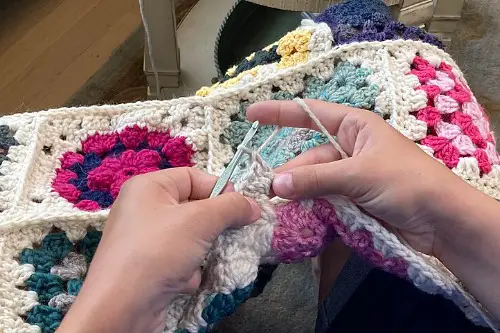
As younger generations seek more meaningful work, small towns are experiencing a revival of old-school trades. Blacksmithing, woodworking, leather crafting, and textile weaving—once thought to be dying arts—are making a comeback as people turn away from mass production and embrace handmade goods. Artisans are setting up shop in small towns where rent is affordable, reviving historic downtown areas with workshops, boutiques, and apprenticeship programs. Some communities are even developing trade schools that focus on heritage crafts, ensuring that these skills are passed down to future generations. The appeal isn’t just nostalgic—it’s practical. Handmade goods last longer, are often more sustainable, and support local economies in ways that big-box retail simply can’t.
This revival is also fueling a boom in hands-on experiences. Travelers are booking weekend workshops to learn how to forge their own knives, handcraft leather goods, or weave traditional baskets. Farmers’ markets and craft fairs are thriving as people seek out locally made products over factory-produced alternatives. Even younger professionals who left small towns for corporate jobs are returning home to launch artisan businesses, finding fulfillment in creating something tangible with their hands. As more consumers prioritize quality over quantity, small-town America is proving that traditional trades aren’t just surviving—they’re thriving.


